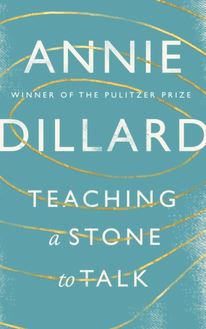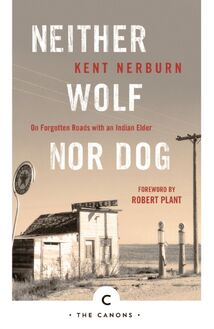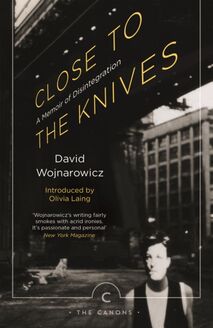-
 Univers
Univers
-
 Ebooks
Ebooks
-
 Livres audio
Livres audio
-
 Presse
Presse
-
 Podcasts
Podcasts
-
 BD
BD
-
 Documents
Documents
-
- Cours
- Révisions
- Ressources pédagogiques
- Sciences de l’éducation
- Manuels scolaires
- Langues
- Travaux de classe
- Annales de BEP
- Etudes supérieures
- Maternelle et primaire
- Fiches de lecture
- Orientation scolaire
- Méthodologie
- Corrigés de devoir
- Annales d’examens et concours
- Annales du bac
- Annales du brevet
- Rapports de stage
La lecture à portée de main
Vous pourrez modifier la taille du texte de cet ouvrage
Découvre YouScribe en t'inscrivant gratuitement
Je m'inscrisDécouvre YouScribe en t'inscrivant gratuitement
Je m'inscrisEn savoir plus
Vous pourrez modifier la taille du texte de cet ouvrage
En savoir plus

Description
Informations
| Publié par | Canongate Books |
| Date de parution | 01 juillet 2010 |
| Nombre de lectures | 0 |
| EAN13 | 9781847678027 |
| Langue | English |
Informations légales : prix de location à la page 0,0400€. Cette information est donnée uniquement à titre indicatif conformément à la législation en vigueur.
Extrait
Contents
Introduction
The Prologue
The Drama
1. Proposal for a Party
2. The January Christmas Tree
3. Knapperley
4. Coming of Spring
5. Problem set for Garry
6. Tea at The Weatherhouse
7. Why Classroom Doors should be Kept Locked
8. Compeared before the Session
9. The Andrew Lorimers go to the Country
10. Andrew Lorimer does the Same
11. Garry and his Two Fools on the Housetop
12. Concert Pitch
13. Proverbial
14. April Sunrise
15. Whom the Gods Destroy
The Epilogue
Glossary
Introduction
‘She threw the curtain about her, drew on a pair of galoshes, and ran into the night.’
When nineteen-year-old Lindsay Lorimer is drawn wildly out into the full moon, I knew that The Weatherhouse was not just a portrait of a community but a sensory thing that would speak to anyone who has known the Scottish land, or enjoyed Nan Shepherd’s beloved work of non-fiction The Living Mountain . ‘Running thus before the wind,’ Lindsay ‘had entered into peace that is beyond human understanding: she was at one with the motion of the universe.’ This is one of the glittering moments that scatter this complex exploratory novel. These epiphanies, often coming when a character is alone and outdoors, are key to Shepherd’s work and make it so exhilarating for me as a reader.
In the fictional Fetter-Rothnie, a small rural community in northeast Scotland, a cast of mainly female characters live their lives in the wake of World War One. The Weatherhouse of the title, with a ‘quaint irregular hexagon’ room, a glass door to the garden and a sundial, is home to ancient matriarch Lang Leeb and her three daughters. It is a microcosm of the country at that time, pursuing a traditional way of life in a changed world. Then there is the wider community, from old tramp Johnnie Rogie to Stella, a young adoptee, and the novel’s other central character, Garry Forbes. When Garry returns to Fetter-Rothnie, scarred by a horrific trauma in the war, he is sceptical about the village: ‘the reconstruction of the universe,’ he thinks, ‘would not begin in this dark hole, inhabited by old wives and ploughmen.’ But in the path of the novel the place affects him deeply and his attitude changes.
The Weatherhouse was published in 1930 and was Shepherd’s second book. She lived in the same house on the outskirts of Aberdeen for eighty-seven years and died in February 1981, three months before I was born. I grew up further north, in the islands, in an agricultural community almost one hundred years later, but many of the concerns remain the same. She explores what I recognise as both the pleasure and toughness of rural life. I have been that young woman escaping into the light of the full moon and also, returning after having lived away, I have felt like Garry, frustrated and conspicuous. It took a slowing down and an opening up to see the light and worth in what was around me.
Many of the characters are ‘looking for the heart of life.’ We are repeatedly taken into the minds of women seeking some kind of self-realisation. Mrs Ellen Falconer longs for purpose, endeavour and imagination: ‘It was life she wanted, strong current and fresh wind, no ignoble desire.’ She encourages her daughter’s connection to Garry to satisfy her own desires. Meanwhile, minister’s daughter Louie Morgan wants to be admired: praying earnestly outdoors, hoping to be seen. Later she connects herself to the dead army engineer David Grey, saying: ‘I wanted to be at the heart of life instead of on its margins.’ Others dispute her version of their engagement, triggering a debate on the nature of truth and reality that is one of the themes of the book.
Compared to Garry’s experiences in the trenches, Louie’s fantasies seem inconsequential, but take up much more time and exploration. Shepherd shows how important minor scandal, reputation and gossip are in a small community. She uses the turning points and strivings that make a life, the friendships and misunderstandings, to prompt deeper meditations.
Nan Shepherd makes ingenious use of free indirect speech to create a novel of great empathy. Uneducated widowed Ellen, a ‘nasty old woman,’ is explored with depth and sensitivity, while crude Stella, born into poverty, comes to represent the future, finding employment and confidence by the end of the book. Characters can say things without really speaking: ‘Garry is coming? I thought, I used to imagine – long ago – you were such friendly you two. I wondered sometimes – but then he went away.’
Shepherd’s sympathy extends to embrace those in the grip of madness, as when Garry thinks, ‘That’s what they said about me: beside himself, cracked. I was in a fever, you see. But I’m convinced I saw clearer than in my right mind.’ All the people in the novel are being exactly themselves and their motivations are presented with truth and kindness. With the Epilogue comes Ellen’s work with the Working Girls’ Guild, giving a sense of new possibilities and complications in the lives of women.
The novel’s generous, calm attention to the inner lives of sidelined, unremembered women means it remains relevant for the twenty-first century. Shepherd herself lived happily without a man for many years and here we are shown women, often unmarried or widowed, as complex and passionate as they approach their later years. Perhaps my favourite moment in the book is when Garry returns from war and witnesses, before she has seen him, his aunt Barbara, ‘a hard-knit woman of fifty-five,’ alone in the kitchen, dancing.
Besides speaking generally for its time and country, The Weatherhouse is also of a very specific place – the outskirts of the Grampians – with a culture and language of its own. Characters go ‘stravagin’ and have ‘collieshangie’. The words are specific to this area but have a control and understatement familiar to me from the isles.
Continually colliding with this controlled society is a wider desire for joy and understanding in Lindsay, Garry and others. There are several passages of quivering beauty and connection, where time and the individual cease to matter. ‘He [Garry] saw everything he looked at not as substance, but as energy. All was life. Life pulsed in the clods of earth that the ploughshare were breaking, in the shares, the men. Substance, no matter what its form, was rare and fine.’
In these pantheistic sequences of unbridled energy, where the earthly and spiritual realms are linked through nature, The Weatherhouse seems pressingly modern, a response that will be familiar to readers of The Living Mountain . It is no surprise that there is currently such renewed interest in Shepherd’s work. She has even become the latest woman to grace a Scottish bank note, appearing on the new Royal Bank of Scotland five-pound note, depicted in front of her beloved Cairngorm hills.
Although written in a period before conservation or industrial farming as we know it, The Weatherhouse pinpoints timeless philosophical debates about the naming of things and our relationship to the environment. Ellen says there is no need to learn the names of the birds: ‘Her lips parted and her eyes shone; and Mrs Falconer longed to tell her of the strange secret of life – how all things were one and there was no estrangement except for those who did not understand.’ The people of Fetter-Rothnie are linked into the bigger cycles of land and community, and what Garry comes to see as ‘this astonishing earth.’
Amy Liptrot
The Main Characters
THE YOUNG PROTAGONISTS
Captain Garry Forbes (30), (‘the Gargoyle’), son of the timid Benjamin Forbes who was half-brother to Barbara Paterson. Wounded in the trenches of the First World War.
Miss Lindsay Lorimer (19), daughter of Andrew Lorimer; sister of Frank, who served in the war with Garry Forbes.
Miss Louisa (Louie) Morgan (35), at Uplands, daughter of the previous minister at Fetter-Rothnie. Louie claims to be engaged to David Grey, Garry Forbes’s engineer friend, who died of T.B.
THE LADIES AT THE WEATHERHOUSE
Aunt Craigmyle (Lang Leeb) (90+), cousin to Andrew Lorimer, the solicitor father of Lindsay and Frank. Widowed at 54, Leeb retired to the Weatherhouse and left things to her three daughters, namely:
Miss Annie Dyce (Paradise) Craigmyle , raised by her father to look after the farm, she took charge of it when he died until crippled by rheumatism.
Mrs Ellen (Nell) Falconer (60), married at 27 to Charlie Falconer who died in poverty, leaving Ellen to return to her old home along with her daughter, Kate Falconer (30), cook at a nearby convalescent hospital.
Miss Theresa (Tris) Craigmyle , Leeb’s youngest daughter, housekeeper to her mother and sisters at the Weatherhouse.
FROM THE NEIGHBOURHOOD
Miss Barbara (Bawbie) Paterson (55), of Knapperley, maiden aunt to Garry Forbes.
Francie Ferguson , son to Jeames Ferguson who helped adapt the Weatherhouse; brother to ‘Feel Weelum’, finally husband (after 22 years engagement) to ‘Peter Sandy’s Bell’, already father to her children, Stella Dagmar and Sidney Archibald Eric.
Mrs Barbara Hunter , of Craggie, ex servant girl and friend to Bawbie Paterson at Knapperley; wife of crofter Jake Hunter; mother of Dave, who returns wounded from the war to re-educate himself as a graduate and a school teacher.
Jonathan Bannochie , cobbler to trade, originator of the phrase ‘Garry Forbes and his twa fools’, referring to Garry, Bawbie and Francie.
The Prologue
The name of Garry Forbes has passed into proverb in Fetter-Rothnie.
One sees him gaunt, competent, a trifle anxious, the big fleshy ears standing out from his head, the two furrows cutting deeply round from nostril to chin, his hands powerful but squat, gift of a plebeian grandfather, and often grimed with oil and grease hardly a figure of romance. Of those who know him, to some he is a keen, long-headed manager, with a stiff record behind him in the training of ex-service men and the juvenile unemployed, tenacious, taciturn, reliable

Ebooks
Chronicle In Stone
Ismail Kadaré


Ebooks
Incognito
David Eagleman


Ebooks
Ocean Sea
Alessandro Baricco


Ebooks
Fortunate Man
John Berger


Ebooks
Teaching a Stone to Talk
Annie Dillard


Ebooks
Neither Wolf Nor Dog
Kent Nerburn


Ebooks
Close to the Knives
David Wojnarowicz


Ebooks
Philadelphia Fire
Edgar Wideman John


Ebooks
L.A. Woman
Eve Babitz


Ebooks
Edge of the Sea
Rachel Carson


Ebooks
Under the Sea-Wind
Rachel Carson


Ebooks
Pattern in the Carpet
Margaret Drabble


Ebooks
Reconciliation
Naoya Shiga


Ebooks
Dante's Divine Trilogy
Alasdair Gray


Ebooks
Summer Bird-Cage
Margaret Drabble

-
 Univers
Univers
-
 Ebooks
Ebooks
-
 Livres audio
Livres audio
-
 Presse
Presse
-
 Podcasts
Podcasts
-
 BD
BD
-
 Documents
Documents
-
Jeunesse
-
Littérature
-
Ressources professionnelles
-
Santé et bien-être
-
Savoirs
-
Education
-
Loisirs et hobbies
-
Art, musique et cinéma
-
Actualité et débat de société
-
Jeunesse
-
Littérature
-
Ressources professionnelles
-
Santé et bien-être
-
Savoirs
-
Education
-
Loisirs et hobbies
-
Art, musique et cinéma
-
Actualité et débat de société
-
Actualités
-
Lifestyle
-
Presse jeunesse
-
Presse professionnelle
-
Pratique
-
Presse sportive
-
Presse internationale
-
Culture & Médias
-
Action et Aventures
-
Science-fiction et Fantasy
-
Société
-
Jeunesse
-
Littérature
-
Ressources professionnelles
-
Santé et bien-être
-
Savoirs
-
Education
-
Loisirs et hobbies
-
Art, musique et cinéma
-
Actualité et débat de société
- Cours
- Révisions
- Ressources pédagogiques
- Sciences de l’éducation
- Manuels scolaires
- Langues
- Travaux de classe
- Annales de BEP
- Etudes supérieures
- Maternelle et primaire
- Fiches de lecture
- Orientation scolaire
- Méthodologie
- Corrigés de devoir
- Annales d’examens et concours
- Annales du bac
- Annales du brevet
- Rapports de stage





